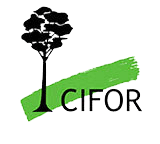Edges of peatlands, usually along rivers, have a long history of human settlement. Peatlands are a challenging place to live, but provide a range of products and income sources, including agroforestry, tree and forest domestication (paludiculture). With the current focus on rewetting, revegetation and revitalization, options for local livelihoods still appear to be an afterthought rather than the start of landscape-scale solutions. Research on peatlands deals with four knowledge-to-action chains: 1) understanding peat and its response to drainage and rewetting as the basis for fire risks and carbon emissions, 2) moving from denial as initial government response to a willingness to act, 3) being realistic about the ability to act of governance systems connecting local concerns to global issues, 4) alternative livelihood and development options in wet (or rewetted) peat landscapes.
This discussion forum is focusing on livelihood options for local communities using a case study landscape in Jambi (Sumatra, Indonesia) as the starting point, considering different peatland landscapes and contexts in the discussion. In many other peatland landscape contexts, other options may deserve priority, but market value chains, shifts from conflict to cooperation in resource governance and landscape-wide solutions are likely important.
Key questions:
- What are positive examples of transformations in livelihoods in peatland landscapes: where, when, how, why?
- How diverse are the contexts of peatland landscapes: Is every place unique?
- How can the non-peat parts of the landscape contribute to peatland management?
Background reading:
- Agroforestry on peatlands: combining productive and protective functions as part of restoration
- Peat and land clearing fires in Indonesia in 2015: Lessons for polycentric governance
- Mud, muddle and models in the knowledge value-chain to action on tropical peatland conservation
- Domestication of Dyera polyphylla (Miq.) Steenis in peatland agroforestry systems in Jambi
- Migrants, land markets and carbon emissions in Jambi, Indonesia: Land tenure change and the prospect of emission reduction











